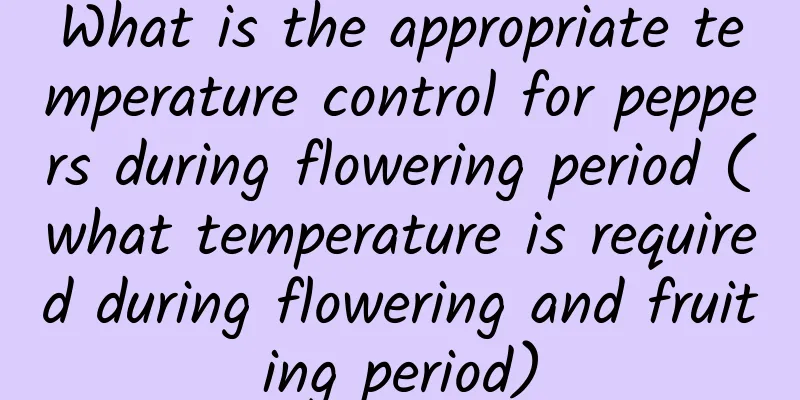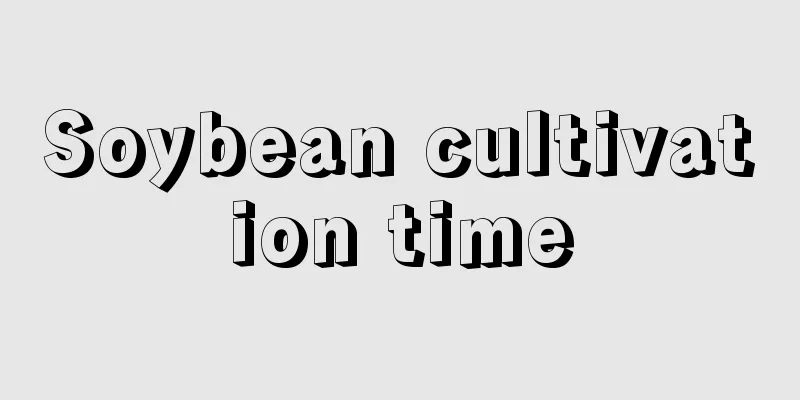What is the appropriate temperature control for peppers during flowering period (what temperature is required during flowering and fruiting period)

|
A farmer asked : When does pepper flower bud differentiation begin? What is the appropriate temperature? The temperature control during the differentiation of flower buds in pepper planting is during the seedling period. So there is a standard here, that is, the "true leaves" of the pepper plant begin to differentiate when there are 4 to 5 leaves, and some have more than 3 leaves. This time is generally the seedling raising period, and transplanting has not yet been carried out. It is generally about 30 days from sowing or seedling raising. As for the suitable temperature, it is generally around 25℃ to 28℃ during the day, the minimum should not be lower than 15℃, and the maximum is recommended not to exceed 32℃. This is not conducive to the differentiation of flower buds of pepper plants, and will eventually lead to the "unstable roots" of the grown flowers, which will easily cause the flowers to fall off. Therefore, it takes 30 days from pepper planting to flower bud differentiation, and it generally takes 30 days from seedling raising to transplanting. In addition, it takes about 30 to 35 days for the flower buds to differentiate into peppers and for the peppers to bloom. It usually takes two months for the peppers to start blooming and producing fruits. If the seedlings are raised first and then transplanted, the peppers will bloom and bear fruit about 30 days after transplanting. Therefore, the following points need to be noted when differentiating peppers. 1. TemperatureThe first thing is definitely the temperature. The peppers in my house can be harvested and eaten now, so it is almost impossible to control the temperature in the open field manually, so I suggest that everyone should do a good job of weeding in the pepper field. Also, regarding the method of planting peppers outdoors, it is recommended to use the method of laying black ground film, because it has good heat preservation and moisture retention and weed control properties. Of course, there is generally no need to worry about this problem in a vegetable greenhouse. The temperature can be controlled manually, and peppers are planted by raising seedlings first and then transplanting, so it is best to control flower bud differentiation and temperature. Two layers of ground film will be laid, the bottom layer is a black ground film, and the other layer is a small arch shed built with white ground film. In this way, both the differentiation of flower buds and the flowering and fruiting of peppers will be much faster than those planted in the open field. 2. WeedingWeeding also needs to be done well. This is a basic job, especially for peppers grown in the open field. Since the peppers grown in vegetable greenhouses are at the time of transplanting, there is no weeding work at this stage. 3. Water and fertilizerWater and fertilizer management needs to be in place. At this stage, peppers have a relatively large demand for water and fertilizer, so it is recommended that you pay more attention to peppers grown in the open field. The vegetables planted in the vegetable greenhouse are also in the transplanting stage, so it is sufficient to complete the transplanting work after the flower bud differentiation. |
Recommend
What to do if the leaves of pennywort turn yellow
reason The water is big Overwatering is a mistake...
How often should I water the Areca palm in summer?
Frequency of watering Areca palm in summer Areca ...
When does Schlumbergera start to grow flower buds (What should you pay attention to when Schlumbergera starts to grow flower buds)
Schlumbergera is an epiphytic succulent plant bel...
Where is beech suitable for planting?
Zelkova tree planting area Generally, beech trees...
Are dahlias poisonous?
1. No toxicity Dahlias are non-toxic flowers. It ...
How many kilograms of garlic can be produced per mu?
Garlic Introduction Garlic is a plant of the genu...
The difference between Daphne koreana and Oleander
1. Different varieties Daphne is an evergreen upr...
Where to grow blueberries?
Blueberry growing area Generally, blueberries gro...
How to prepare soil for Christmas cactus, does it prefer acidic soil or alkaline soil?
1. Soil preparation method 1. It likes acidic, lo...
Common pests of saffron (crocus) and their control methods
Saffron borer Hazard phenomenon Autumn is the hig...
How to propagate the succulent black magic master? Cutting, leaf, beheading propagation methods
How to breed black magic succulent There are usua...
The efficacy and function of mulberry
1. Aid digestion Mulberry seeds are rich in fatty...
Complete picture of ornamental vegetable varieties The latest varieties of vegetables with high ornamental value
With the development of society, many vegetables ...
The hydroponic method of coleus
Preparing the Hydroponic Container It is best to ...
How to fertilize red peony
Application of base fertilizer Speaking of base f...









